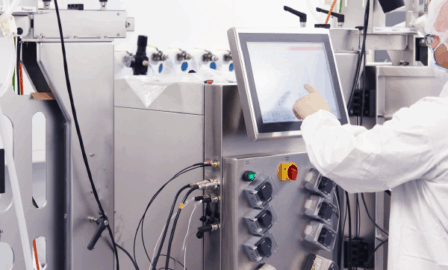2021 Pharma Trends
Clarkston is breaking down the 2021 pharma trends to look for in the new year. With the outbreak of COVID-19, many anticipated trends surrounding the pharmaceutical industry accelerated while others were deprioritized or overshadowed. As the race for a vaccine began in March, drug manufacturers have been forced to shorten timelines and processes significantly. Pressures for a vaccine have only been amplified by the heightened awareness from consumers – consumers who’ve been hyper-focused on the industry as they anxiously await a solution to the pandemic. Similar pressures on the FDA to expedite the path to a vaccine will force the regulatory body to rebuild integrity and public trust in 2021.
Slowed deal-making in 2020 is expected to regain momentum as large companies continue to see opportunities to improve growth, enhance innovation in research and development, and capitalization on technological capabilities through targeted M&A. Pharmaceutical businesses will also seek new opportunities to drive growth by taking advantage of further trends in 2021 in digitalization and patient engagement.
Download the Full 2021 Pharma Trends Here
2021 Pharma Trends
TREND #1: Assessing Impacts from a New Administration
With a new administration entering the White House in 2021, various potential impacts to the pharmaceutical industry are expected. In terms of priorities, the Biden team released a healthcare manifesto proposing expansion of the Affordable Care Act, sweeping drug pricing reform, and more. The probability of these initiatives rely heavily on the yet to be determined makeup of the United States Senate.
The impacts of the Biden administration will vary depending on the results of the George Senate runoff. That said, there will be impacts nonetheless. A new administration ushers in new leadership and new priorities through the regulatory agencies and bodies that affect the pharmaceutical industry most.
President-elect Biden has been reported as looking to nominate California Attorney General Xavier Becerra for Secretary of Health and Human Services. Becerra, a staunch supporter and demonstrative proponent of the Affordable Care Act will likely assist Biden in filling a position under unprecedented pressure currently – FDA commissioner. The incoming head of the FDA will have significant responsibilities related to the Covid-19 pandemic, vaccine rollout, testing, and more.
All of this comes on the heels of a year of ups and downs for the 17,000-employee agency. Consumers, legislators, and the media have called into the question the efficacy of the regulatory body as months of reports of infighting, dysfunction, and more have plagued the FDA.
Seemingly the FDA is at an inflection point, pressured to evolve with the industry to support the rapid distribution of life-saving treatments. How the body navigates these pressures outside of Covid treatments remains to be seen but with attention at an all-time high, the pressure is on for the FDA to innovate, rebuild public trust, and collaborate closely with pharma.
Download the Full 2021 Pharma Trends Here
TREND #2: Regaining Steam in Deal Making Activity
Economic uncertainty driven by the novel coronavirus led to a decrease in deal making activity and size throughout 2020. The acquisition of Immunomedics by Gilead Sciences at $21B remains the largest industry deal of the year, a relatively small size compared to 2019’s $95B Bristol-Myers and Celgene deal or AbbVie’s $63B acquisition of Allergan.
Instead, companies in the pharmaceutical industry pivoted to focus on establishing partnerships to aid in combatting the pandemic and searching for a vaccine. Not only were pharma and biotech companies of every size partnering together, they were also establishing cross-industry partnerships with academic and healthcare institutions.
Looking towards 2021, this focus on collaboration is expected to shift back towards traditional M&A activity. According to data from S&P Capital IQ, businesses in the pharmaceutical company are currently sitting on excess cash reserves equal to over $170B. While Covid has changed a lot in the industry, the drivers for deal making remain the same – innovation, product portfolio optimization, and growth.
With excess cash reserves across the big players in the industry, it’s reasonable to expect a strong return to the robust M&A activity we saw in the years building up to 2020. With businesses hungry to resume M&A, it will be even more critical that leadership align closely on goals, strategies, and priorities in order to act on opportunities quickly as the market will likely be especially competitive this year.
Download the Full 2021 Pharma Trends Here
Read last year’s Pharmaceutical Industry Trends Report here.
Subscribe to Clarkston's Insights
Contributions by Alexandra Hatsios.



